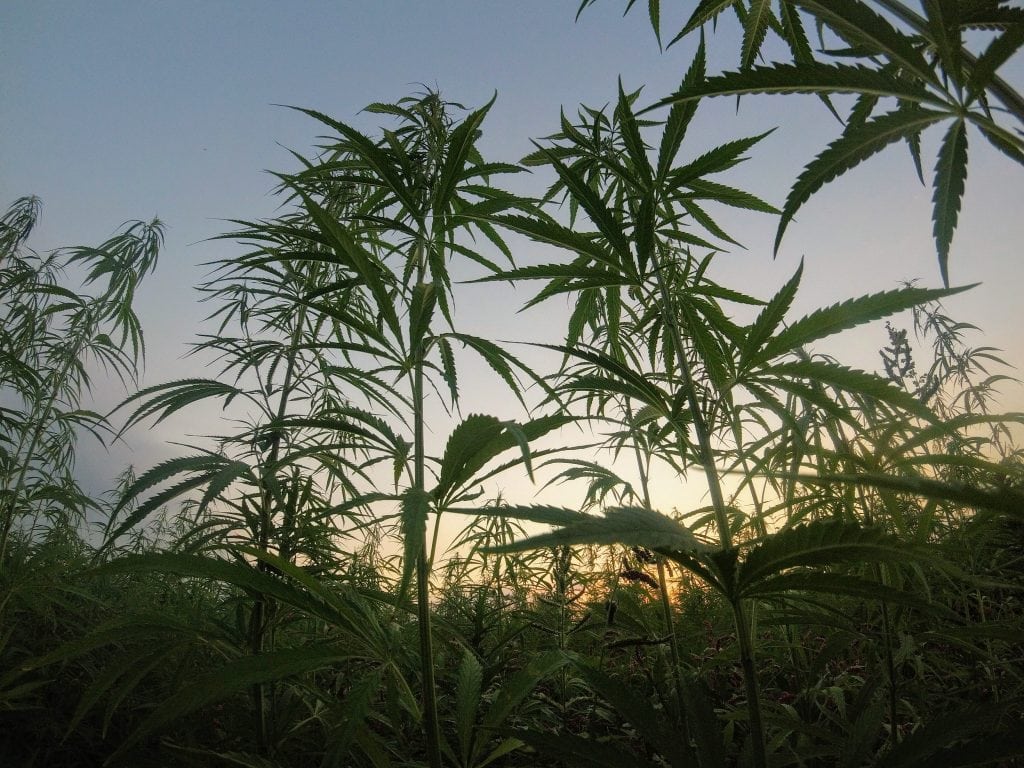The Italian term for hemp refers to the entire genus of this plants. However, there are three cannabis strains to consider: indica, sativa and ruderalis. Textile Hemp is the sativa that contains amounts of THC that are too low to smoke. At the basis of this distinction is all the prejudice now created around this plant and the textile fiber that is obtained from it.
In the English language there is greater precision and the term hemp is used to indicate the type of cannabis plant used for textiles and industries and to distinguish it from the more well-known variety: the indica. In colloquial language it is possible that the word hemp is also used to mean the cannabis strain to smoke instead, along with many other colloquial terms such as marijuana and many others.
The history of textile hemp begins thousands of years ago. Archaeologists have found the first traces of hemp textiles in China (8000 BC) and Kazakhstan (4000 BC). The fiber obtained from this plant since ancient times, however, was not immediately used to produce textile products for clothes, but rather sails and ropes for boats.
A curiosity related to this is that the fabric initially used for the sails takes the name of canvas starting from the term cannabis. It became very important for this in the period of colonial voyages by sea, following the discovery of America. After being used for thousands of years for multiple uses, from the naval field to paper, in the last century, the history of hemp has been very troubled in the world. In many countries including the United States and Italy, with various laws it has begun the association of all varieties of hemp with the most famous marijuana and to prohibit or discourage its cultivation with various laws.
American situation:
“On June 14, 1937, President Roosevelt signed the Marijuana Tax Act, issued by the Congress of the United States of America, which effectively prevented the cultivation of any type of hemp, even for medical purposes, a field in which it had been widely used for centuries.
[..] In 1961, with the Single Convention Drug Act, the UN officially classified cannabis as narcotic. The pressure from the USA was decisive. The American representative of the UN Commission on Narcotic Drugs was Harry Anslinger. In December 2020, the UN officially reclassifies cannabis, removing it from the so-called Schedule IV of dangerous drugs (such as heroin and cocaine) and recognizing its therapeutic value. “
From Wikipedia: https://it.wikipedia.org/wiki/Marihuana_Tax_Act
Italian situation:
“In 1975, when the ban on the cultivation of Indian hemp Cannabis indica was tightened and at the same time strict regulations were put in place for textile hemp, the sector was completely abandoned. A difficulty in cultivation, with the narrowing of the legislation against drugs, is given by the morphological similarity of the two cannabis species, despite the profound difference in the content of THC (tetrahydrocannabinol), the principle with narcotic effects.
The regulatory framework has changed with the increased sensitivity for non-food agricultural production, improved production processes and above all for the adoption of European Union standards; the latter with EEC regulation no. 1164 of 1989 provided for the disbursement of a community contribution of 1,300,000 lire per hectare. In contrast, however, in the same years the DPR 9 October 1990 n. 309 bearing the “Consolidated text of the laws in the field of drug discipline” which mentioned the prohibition of cultivation of cannabis indica and said nothing about cannabis sativa, the interpretation therefore had been that of the extension of the prohibition. The subsequent EC regulations n. 1672/2000 and 1673/2000 confirmed the Community subsidies and the Italian authorities had to adapt to European rules. Hence the first attempts to reintroduce the crop: 290 hectares in 2002, 857 hectares in 2003, 1,000 hectares in 2004 with presence in Emilia-Romagna, Piedmont and Tuscany. “
From Wikipedia: https://it.wikipedia.org/wiki/Canapa_(tessile)
The cultivation and knowledge around this plant with a thousand resources was thus reduced and large-scale cultivation resumed only in the last thirty years in Italy.
On December 2, 2016, the law n.242 was promulgated by the Italian Parliament which has this title: “Provisions for the promotion of the cultivation and agro-industrial chain of hemp.”
This law once again encourages the cultivation of cannabis sativa of which Italy has been one of the major producers together with Russia for centuries.
Article 2 of the law specifies the purposes for which cultivation is permitted;
To obtain the fiber from the plant, a process similar to that of flax is applied. The part from which the textile fiber is extracted is the innermost part of the stem of the plant which after being extracted is required to macerate before becoming textile fiber as for the flax plant. Scraps are obtained from the same plant; the tow and in addition the woody part, or hemp that are used, among others, for the production of paper, and also in the construction field.
The cannabis sativa plant is particularly resilient to adverse conditions, growing and thriving even on poor or contaminated soils. In fact, it is a plant also used for land reclamation or cultivated as part of crop rotation, because it leaves the land rich in properties. Since it does not require great care to grow and does so at a rather rapid rate, it is a plant suitable for developing countries, which would not be able to grow other plants from which textile fibers are obtained due to the high costs of their own. maintenance.
For centuries, hemp has been used for the production of paper. The fiber and hemp wood are already white in color, the resulting paper is therefore already printable.
This is therefore a much more ecological process than what is needed to obtain paper from the cellulose of tree wood. To do this, in fact, a large number of pollutants not necessary for hemp wood are used, for which a treatment with hydrogen peroxide is sufficient to make it completely white, instead of the chlorine-based compounds necessary for the paper obtained from the wood of trees. To date, hemp has returned to be used for special and valuable paper products.
An example of an Italian company that produce Hemp yarns and fabrics is Maeko Tessuti.
The Italian company of sustainable fabrics has revived Italian agricultural companies in the field of yarns and has decided to focus on hemp and nettle fiber with the Rifloc project of which they are the founders.
“The goal of this project is to rebuild the hemp and nettle supply chain in Italy, starting from the already active organic plantations. All this with the aim of obtaining a good fiber to be used as a base for Maeko ecological yarns and fabrics. “
From the Maeko website we see some more information on the structure of the textile fiber extracted from hemp:
“Structurally, the hemp fiber is hollow and hygroscopic, a perfect combination from which we obtain a yarn with a high thermal insulation and breathable capacity, which behaves like wool: cool in summer and warm in winter. Among the most resistant natural fibers to textile processing, hemp makes it possible to create a fabric that is more resistant to mechanical action, wear, tear and deformation than any other natural fabric. Hemp fabrics combine sturdiness with softness, thus making it possible to obtain particularly comfortable and comfortable garments.
The fabrics obtained from the hemp plant are also endowed with other very interesting properties: they reflect ultraviolet rays, shield from electrostatic fields, do not conduct electricity, do not irritate the skin because they are hypoallergenic and keep bacteria away from the surface of our body. because they are antiseptics. “
Among the oldest and longest-lived producers of hemp yarns in Italy, Linificio e Canapificio Nazionale should be mentioned. Already in 1876 the Linificio e Canapificio Nazionale was a listed company and today produces very fine linen and hemp yarns for orthogonal weaving and knitwear, always with an eye to tradition but also to innovation as regards natural fibers with which he works.
One company we work with as a knitwear factory that uses hemp fiber is Cotonificio Olcese Ferrari. The latter in its summer collection offers a hemp and bamboo viscose blend yarn. Bamboo is another truly surprising sustainable fiber, which we talked about in a previous article a few months ago. The yarn in question is called Hempy, it is a yarn count nm13.500, therefore a yarn for 12 gauge if knitted in a standard way.
List of some of the sectors where hemp is used:
• Textile and packaging: used to make ropes, cloths, bags, rugs, accessories and clothing
• Bio-fuel: hemp is ideal for the production of biomass fuels such as ethanol, the alternative fuel to oil
• Bio-building: hemp, combined with lime, is a good thermal insulator
• Bio-plastics: from fibers it is possible to produce less polluting plastics both for the creation process and for disposal
• Paper: with the cellulose of hemp it is possible to produce huge quantities of paper
• Cosmetics: hemp oil has anti-inflammatory and regenerating properties that are excellent for the skin
• Antibacterial: various chemicals found in hemp have antibacterial and antifungal properties, it is widely used in American hospitals to fight the spread of staph infections.




